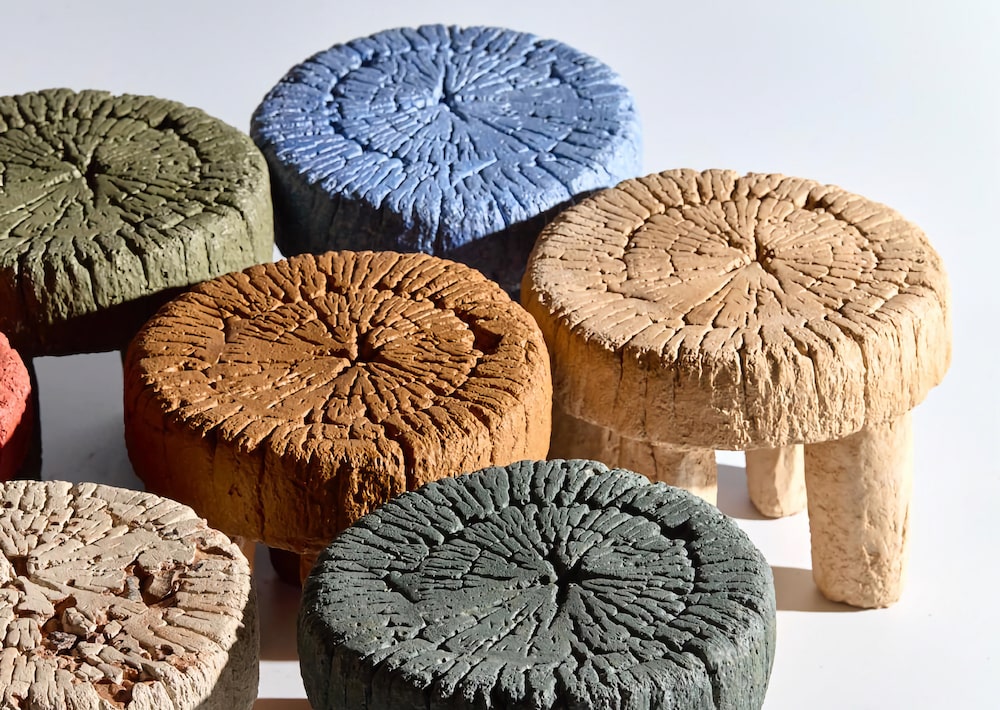On view at Whitechapel Gallery in London this past summer was Emma Hart’s Mamma Mia! The artist is the sixth winner of the Max Mara Art Prize for Women, which supports female artists in the U.K. to develop their practice through a six-month residency in Italy, followed by a solo exhibition at the gallery, a longtime partner of the prize. Hart’s new work Mamma Mia!—an installation of ceramic heads suspended from the ceiling that emit light (like an overhead lamp) in the shape of a speech bubble (thanks to a pointed nose)—is the result of her time spent in Milan, Todi, Faenza, and Rome during the summer of 2016.
Hart spoke with us from her studio in London about her time in Italy, the exploration of pattern, and her interest in psychological and social behaviors.
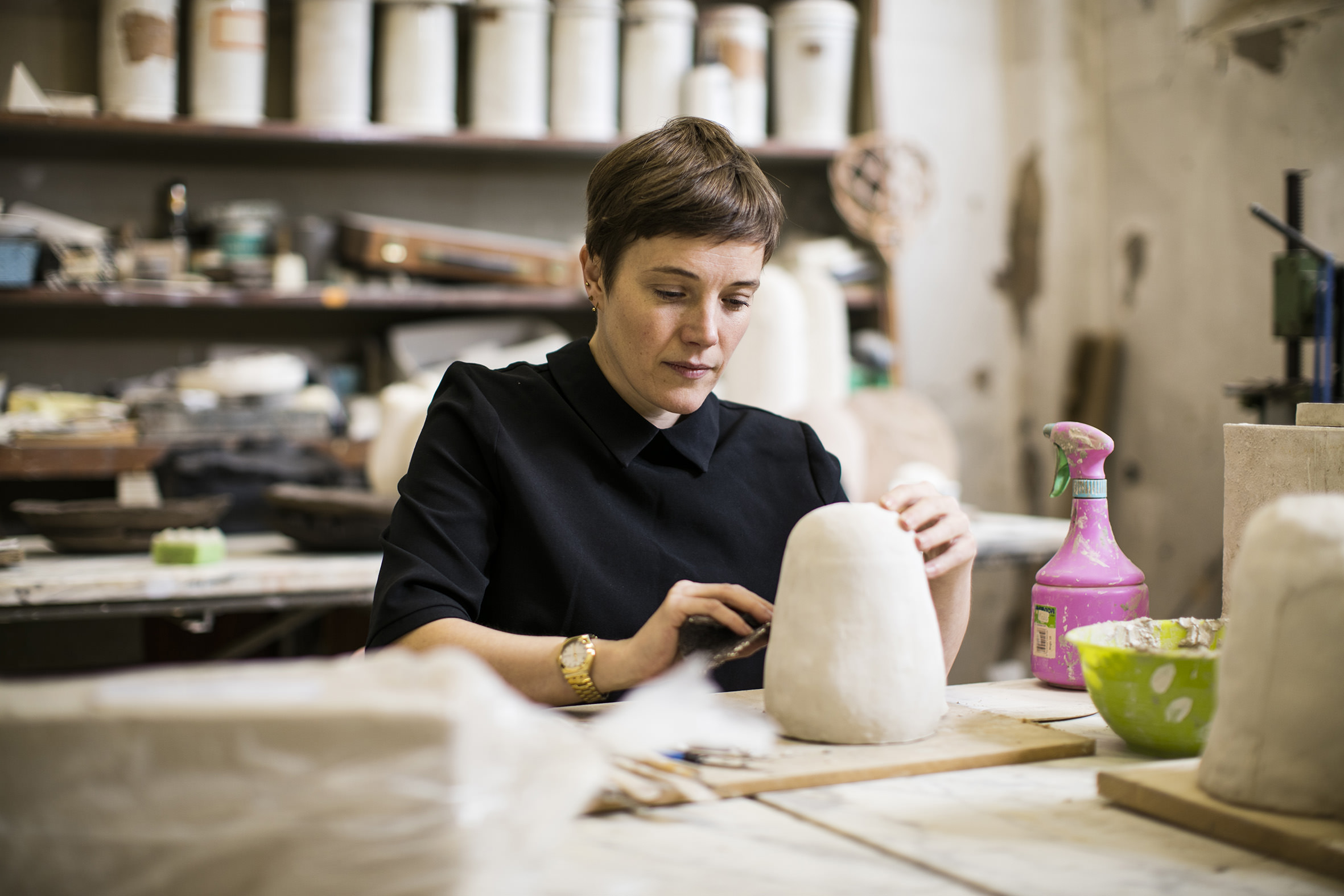
Courtesy of Max Mara
WHITEWALL: A six-month residency is quite substantial as an artist. What were your expectations for your time in Italy?
EMMA HART: I wanted to do two things. One was explore ceramics, maiolica, which is an Italian traditional way of glazing ceramics. The other thing I wanted to do was think about things that were relevant to my work. I’ve been thinking a lot about how we make relationships with art and how an artwork can go beyond a visionary experience. I was aware of a radical psychologist in Milan who developed a theory of psychology called the “Milan Systems Approach” for family therapy at the Scuola Mara Selvini Palazzoli. So I proposed to spend part of the residency on her practice, and then the other half in practical theory.
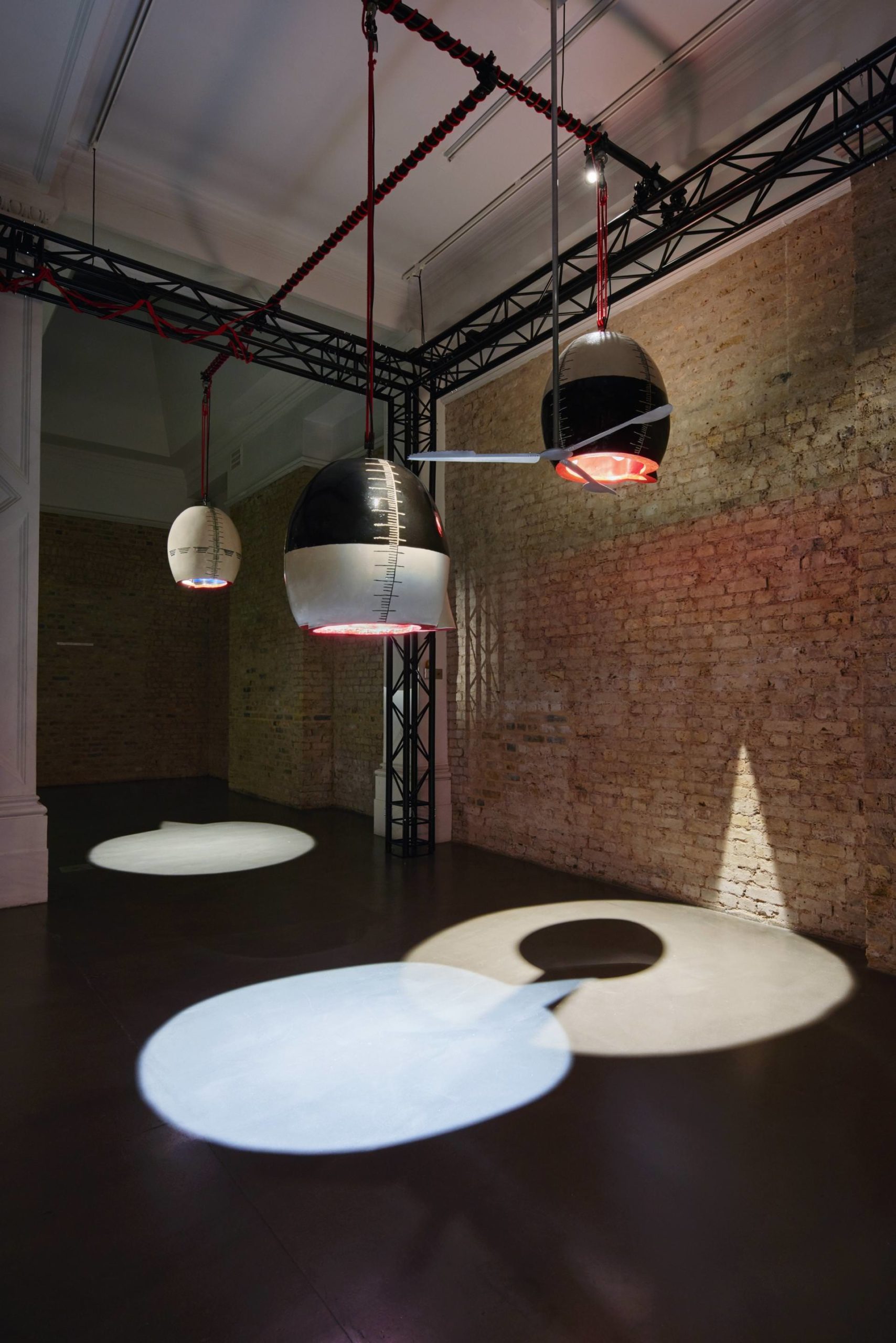
Emma Hart
Mamma Mia!
installation at Whitechapel Gallery, 2017
Photo by Thierry Bal
© Whitechapel Gallery
WW: What about that approach to family therapy interested you?
EH: She never saw individualism; she only saw predominately family groups. She was interested in how the family sets up feedback loops or patterns of behavior and how families get stuck in these loops, loops of behavior. And she promoted nonverbal therapy, where she would ask one member of the family to position the other members of the family as if they were statues or mannequins into formation, which might suggest, for example, how she felt when her son was born. And then you talk about how the 30 seconds of being positioned felt. As an artist, a nonverbal approach, turning people into sculptures, is really rich for me. You relive it, not verbally but physically.
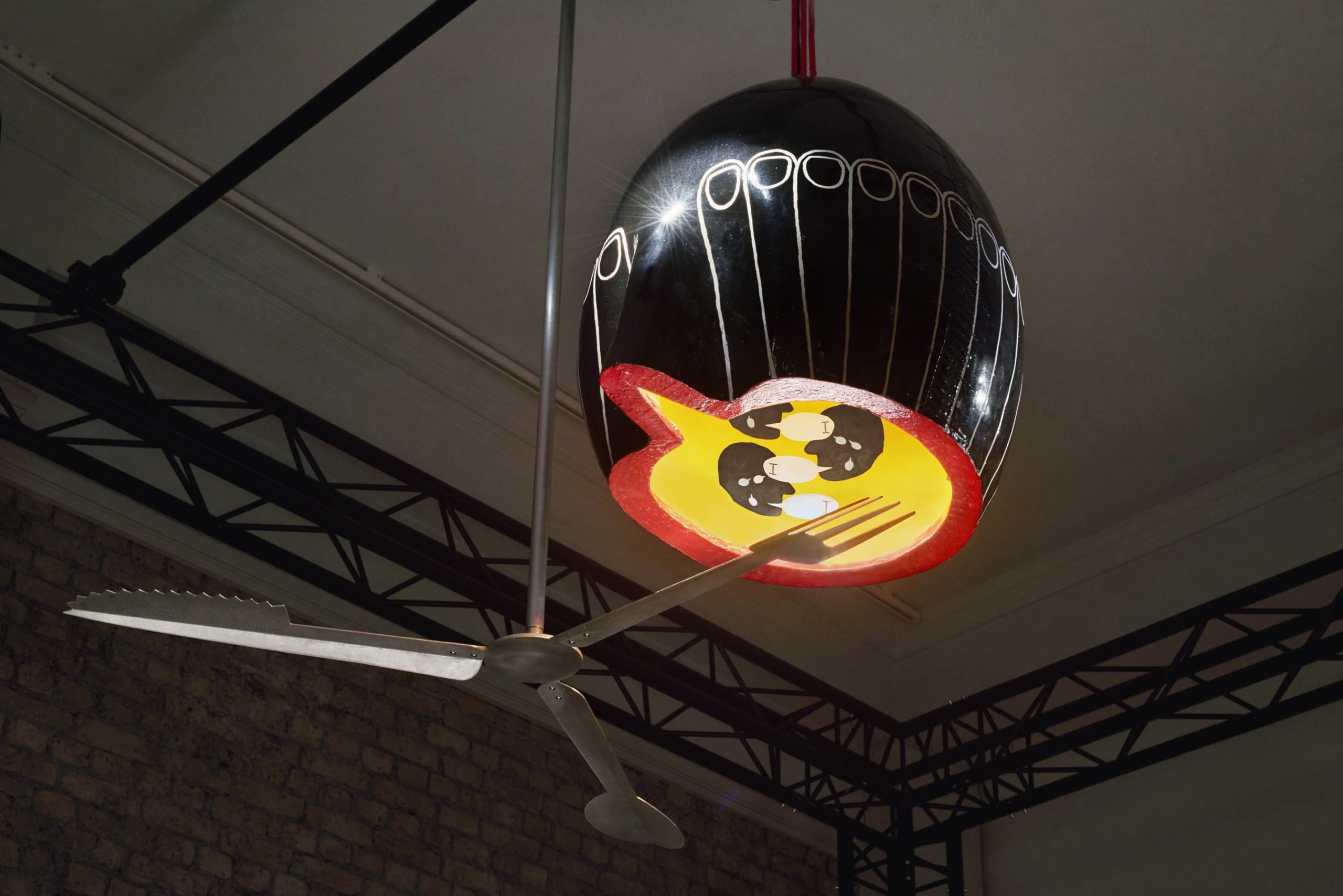
Emma Hart
Mamma Mia!
installation at Whitechapel Gallery, 2017
Photo by Thierry Bal
© Whitechapel Gallery
WW: What was it like in Milan?
EH: I had a studio in Milan and some of the things in Milan kind of undid me a bit, like the heat. There were no trees and I found it really bright. So in my studio, in between spending my days in the clinic, I was starting to put together ideas around light. I also felt like the psychologist. They are a bit like cave miner trying to shine a torch in order to fix a problem. So I quickly got to this sort of analogy, of shining a light.
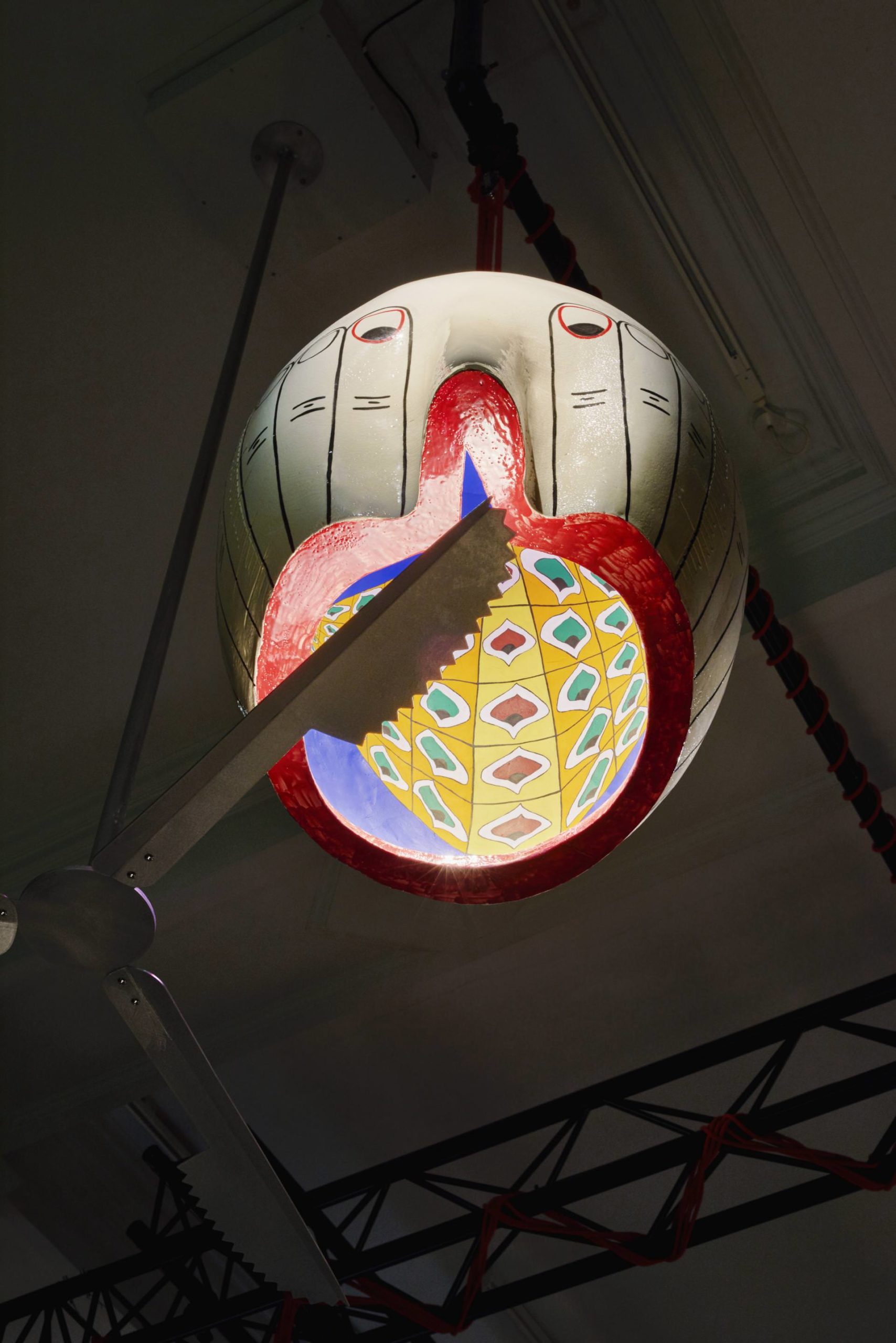
Emma Hart
Mamma Mia!
installation at Whitechapel Gallery, 2017
Photo by Thierry Bal
© Whitechapel Gallery
WHITEWALL: What about the maiolica ceramics you found in Todi interested you?
EH: I was enticed by all these patterns. And I thought I would go and make one myself. So for three weeks I was there and I tried to design a pattern. What I had been looking at in Milan were patterns of behavior and now in Todi I was looking at visual decorative patterns. I made that link and then I tried to design a pattern that could speak about relationships as well.
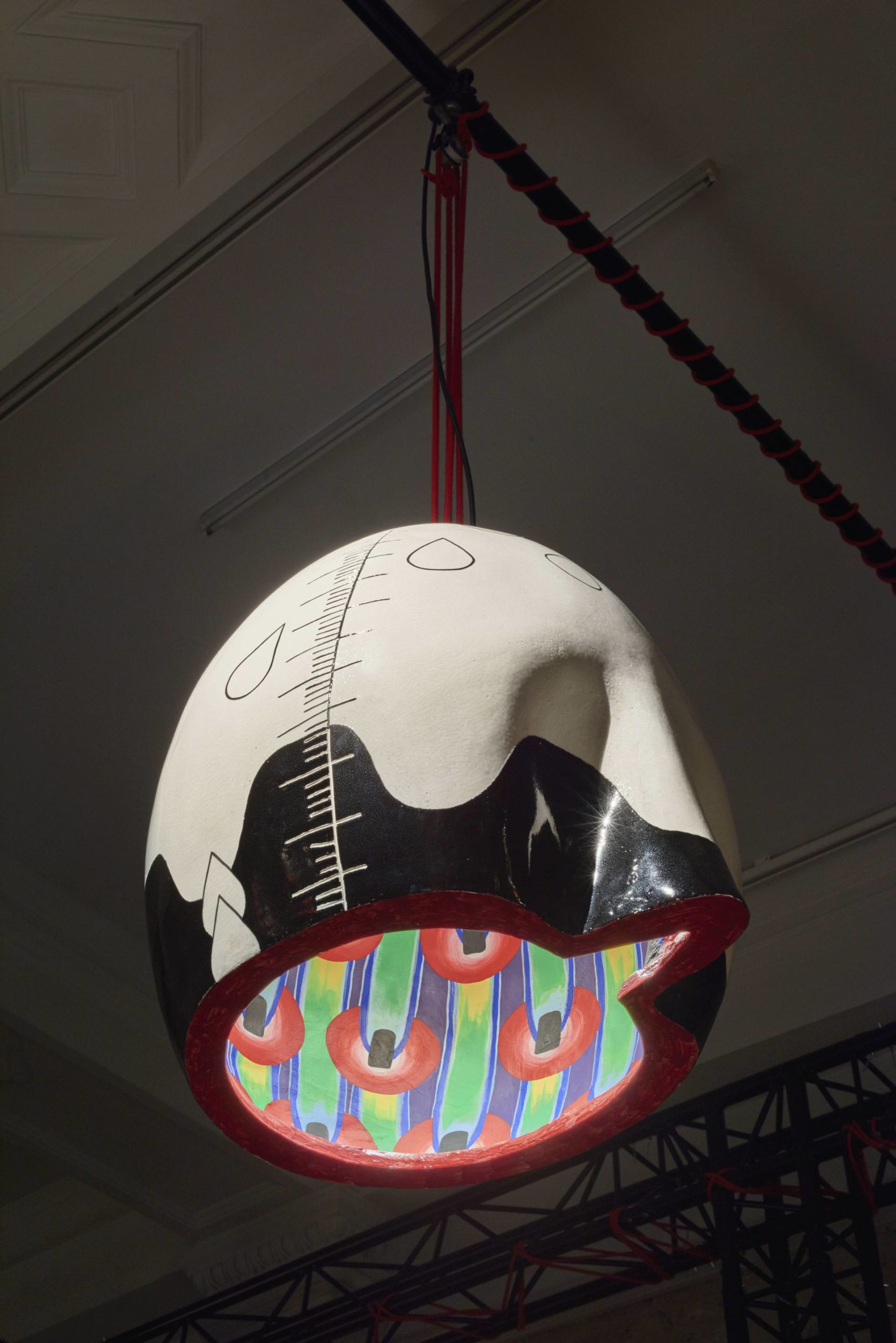
Emma Hart
Mamma Mia!
installation at Whitechapel Gallery, 2017
Photo by Thierry Bal
© Whitechapel Gallery
I was trying to work out if there was a potential relationship between the study of the patterns behavior done in Milan and decorative patterns done on ceramic.
WW: Was it the first time you’d worked in pattern?
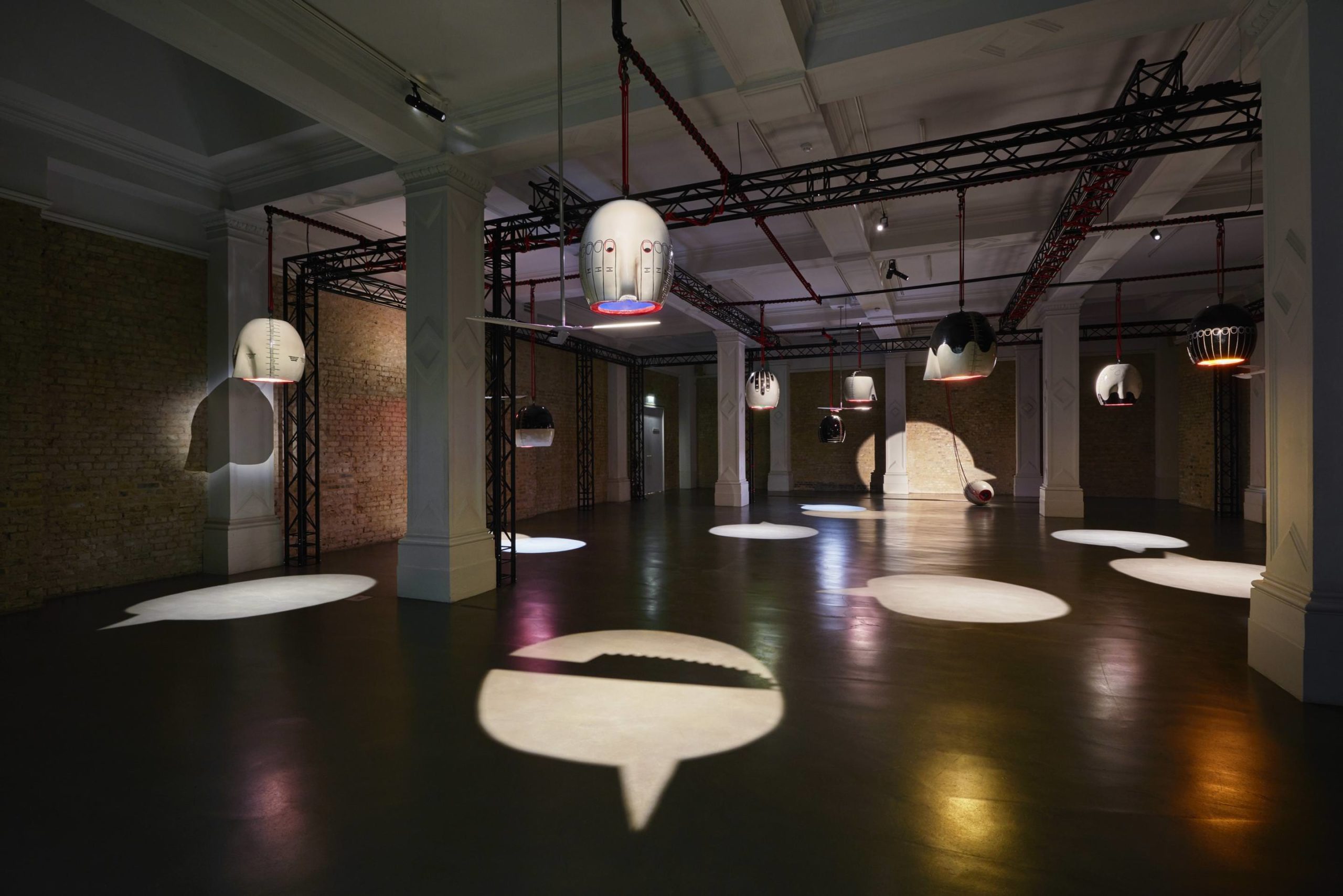
Emma Hart
Mamma Mia!
installation at Whitechapel Gallery, 2017
Photo by Thierry Bal
© Whitechapel Gallery
EH: Absolutely.
WW: How did it all come together for Mamma Mia! at Whitechapel?
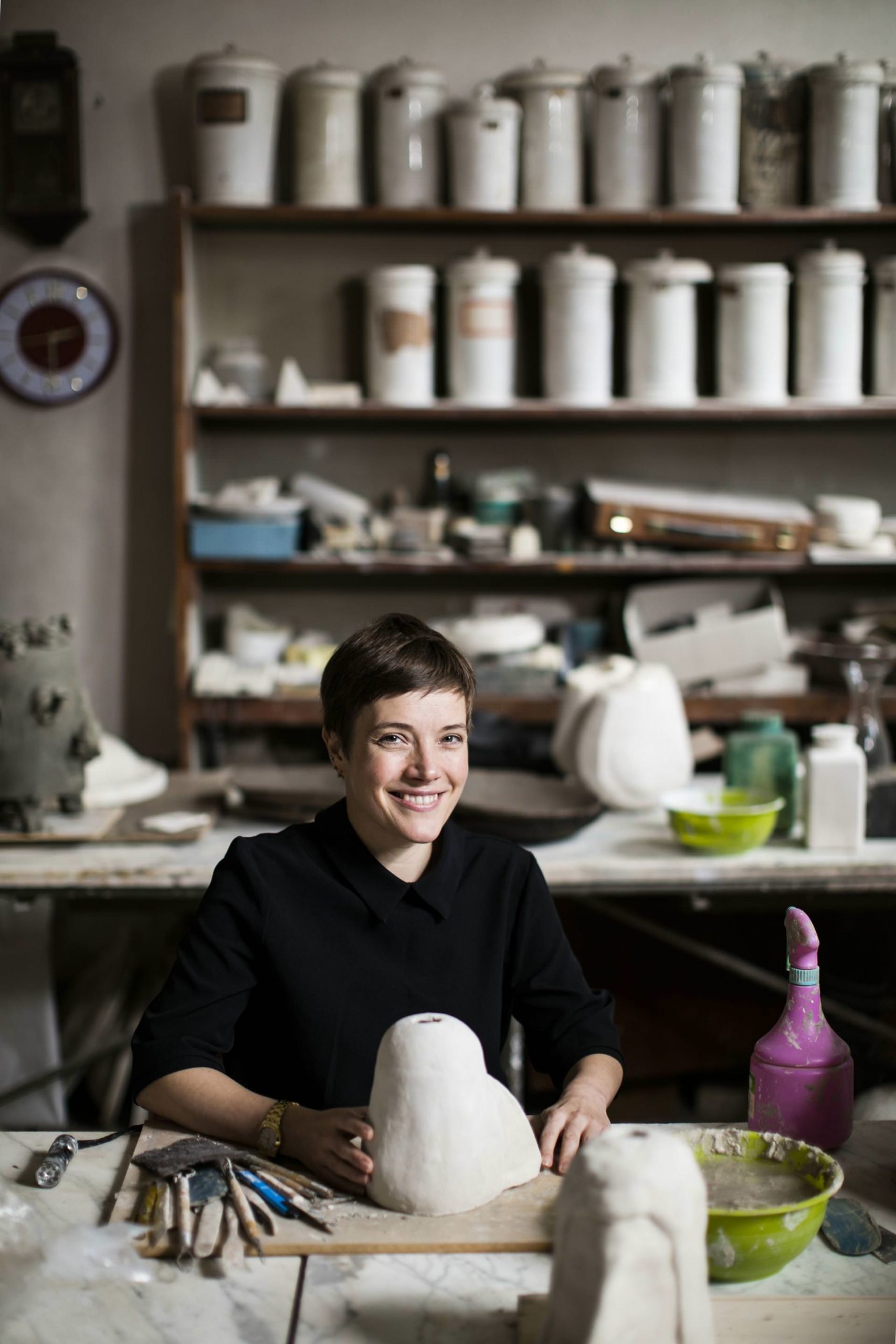
Courtesy of Max Mara
EH: I knew I wanted to work with light and have it fall directly on a viewer, so someone could stand under a lamp and be projected on by the beam of light. I made a large group of ceramic lamps that look a bit like jugs. And there is a relationship between heads and jugs. And the light that they cast on the floor is in the shape of a speech bubble, so you are being spoken to by these big ceramic lamps above you. The lamps are black and white on the outside, but inside, as in inside the mind, they are filled with colored patterns. You stand under the lamp and get blasted by all of these patterns that represent the state of mind.
These speech bubbles are really active. They are falling on you, and it represents how relationships work. We are smothered by other people’s words.
WW: Has your time in Italy affected your practice back in your studio in London?
EH: My studio perspective has changed hugely. I am doing things I was never doing before—I am painting, drawing designs on the computer. It’s been hugely significant.
This article appears in Whitewall‘s fall 2017 Couture Issue, out now.







